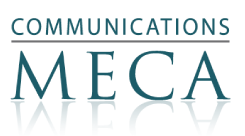In the next few days, both Canada and the United States will be celebrating our National Holidays, on July 1 and July 4 respectively. And these holidays fall only a week after the G20 summit of world leaders held this past weekend in Toronto.
So, it’s not surprising that Martin Waxman, Gini Dietrich and I found ourselves focusing in this week’s Inside PR on earth-moving news (yes, we had an earthquake in Canada too!), including the G20 Summit and the view that social media, especially Twitter provided of this event.
In a nutshell, the social media coverage was visceral, diverse and community-oriented. Traditional news media, on the other hand, while capturing pictures of the street level action, had a near monopoly on coverage of what went on inside the secure perimeter of the actual G20 Summit.
Does this highlight a limitation of social media? People can’t cover what they can’t get access to?
Listen to the complete Inside PR Podcast
Thanks to @michael_kerr @hummingbird604 @SeanMoffitt @digitaljoy @dereklothian for suggesting the topics for this week’s podcast.
Shownotes prepared by Inside PR Producer Yasmine Kashefi
0:27 Martin opens the show.
2:17 Martin tells us how the G20 impacted his move to the new energi PR offices.
3:46 Joe paints a picture of what the G20 was like over the past weekend in Toronto and introduces this week’s first topic: the G20 and social media.
6:36 Joe points out the limitations of social media during the G20.
12:51 Joe wonders why the G20 organizers failed to incorporate elements of social media to inform the public during the talks.
14:53 Martin introduces the second topic: how social media is breaking “news” before traditional media.
18:18 Gini explains how it is difficult to determine what is and isn’t credible on Twitter.
21:18 Martin closes the show.










